

Congratulations to the 2025 National Teachers of the Year!
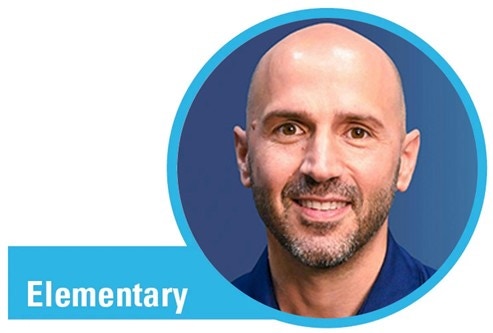

Thomas Gelardi
Fresh Meadows, NY
Q: What does being named National Teacher of the Year mean to you personally and professionally?
A: Being named National PE Teacher of the Year is such an exciting honor and means so much to me personally. Professionally, it inspires me to keep learning, growing, and sharing my passion for physical education with others in the field.
Q: What's one piece of advice that has stuck with you throughout your teaching career?
A: One piece of advice that’s stuck with me is: “Every child is someone’s whole world.” It reminds me to lead with patience and kindness every day.
Q: What’s your go-to activity or lesson that always gets students engaged?
A: “Mission Impossible”—an obstacle course-style game where students work together to get through challenges without touching the “lava.” It’s always a hit and encourages teamwork, problem-solving, and tons of movement!
Q: What’s one underrated teaching resource or strategy that you think more educators should know about?
A: One underrated resource is using student leaders to demonstrate and lead activities. It builds confidence, reinforces skills, and creates a positive, inclusive class culture where students learn from each other.
Q: If you had to recommend one piece of equipment every teacher should have, what would it be and why?
A: Scooters – perfect for building strength, coordination, and teamwork. Scooters can be used in a variety of fun, creative games that engage students in both individual and group activities.
Q: What’s your dream piece of equipment that you’d love to have in your program, and how would you use it?
A: Wearable Fitness Trackers for Students – these could be small, kid-friendly trackers that measure steps, heart rate, and calories burned. They would help students learn about personal fitness and set movement goals during PE class.
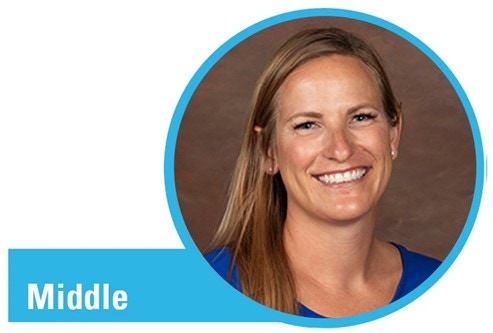

Courtney Lukasavitz
Franklin, WI
Q: What does being named National Teacher of the Year mean to you personally and professionally?
A: It is a great honor to receive the National Teacher of the Year award, which is deeply meaningful. It affirms the work and dedication I’ve poured into my career. Professionally, it’s an opportunity to elevate and advocate for quality physical education on a larger scale.
Q: What's one piece of advice that has stuck with you throughout your teaching career?
A: A quote that has stuck with me and continues to guide both my own language and the expectations I set for students is: "Your words become their inner voice."
Q: What’s your go-to activity or lesson that always gets students engaged?
A: My students love swinging on the ropes in the gym.
Q: What’s one underrated teaching resource or strategy that you think more educators should know about?
A: One strategy more educators could use is intentionally teaching the why behind each lesson and highlighting the transfer skills. Including the mental, social, and physical benefits helps students find purpose in their learning.
Q: If you had to recommend one piece of equipment every teacher should have, what would it be and why?
A: The one piece of equipment every teacher should have is a parachute. Parachute activities promote cooperation and pure joy!
Q: What’s your dream piece of equipment that you’d love to have in your program, and how would you use it?
A: My dream piece of equipment is heart rate monitors. I would use them to teach intensity as it relates to the F.I.T.T. principle and to differentiate learning.
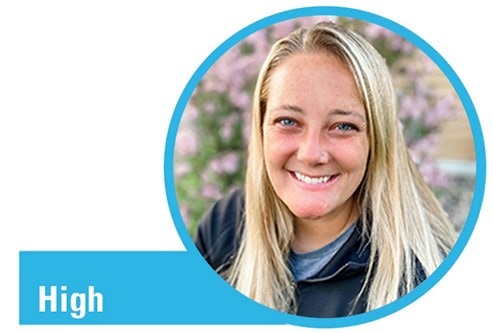

Lisa Smith
Lakeville, MN
Q: What does being named National Teacher of the Year mean to you personally and professionally?
A: Being named National Teacher of the Year means that I am achieving what I set out to do for my students and those around me—help people find joy in movement just as they are.
Q: What's one piece of advice that has stuck with you throughout your teaching career?
A: "Be curious, not judgmental." — Ted Lasso/Walt Whitman. This is a powerful motto that encourages open-mindedness and understanding. I use and share this advice every day. Instead of immediately making assumptions or forming opinions, I strive to learn and understand a situation or person/student fully.
Q: What’s your go-to activity or lesson that always gets students engaged?
A: Cougar Ball (my version of Alaskan Kickball) is a go-to warm-up that is a surefire way to get students engaged, working together, communicating, and moving right out the gate in class. It can be played indoors or outdoors—all you need is a ball, and the two teams can have as many people on them as possible. The bigger the teams, the better!
Q: What’s one underrated teaching resource or strategy that you think more educators should know about?
A: In my humble opinion, the Meaningful PE Framework is underrated and underutilized. It offers a powerful and effective approach to PE that prioritizes the individual, fosters a love of movement, and promotes self-reflection. While it may require a shift in mindset and practice, its potential to create more positive, engaging, and ultimately more impactful PE experiences for all students makes it highly valuable.
Q: If you had to recommend one piece of equipment every teacher should have, what would it be and why?
A: ToppleTubes! I love them, and students love them! They offer endless possibilities and can be used in virtually every activity in some way.
Q: What’s your dream piece of equipment that you’d love to have in your program, and how would you use it?
A: My dream equipment is the Indoor/Outdoor ClassPlus Ultimate Scooter Board Pack! I would use them all the time—and they aren't just for elementary students! Badminton? Play it with scooters! Basketball? Play it with scooters! Handball? Play it with scooters! Invent a new game with scooters! Need to bring back the joy in high school PE? One word: Scooters.
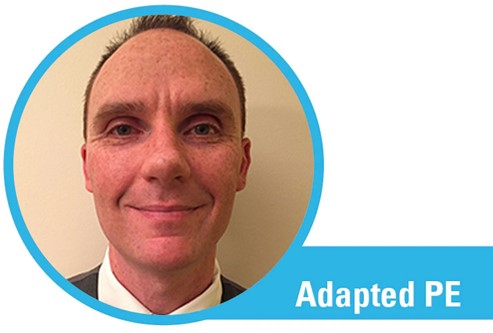

Brad Hunter
Baltimore, MD
Q: What does being named National Teacher of the Year mean to you personally and professionally?
A: Being a National Teacher of the Year means that the scores of school staff and personnel who have aided me on my teaching journey can share in a moment of celebration and recognition, knowing that their efforts make a difference and matter. I hope that my family sees it as an acknowledgment of their contributions as well, because one cannot excel at teaching without strong support at home.
Q: What's one piece of advice that has stuck with you throughout your teaching career?
A: Verna Myers has a quote that resonates with me: "Diversity is being asked to the party. Inclusion is being asked to dance." I think of this often in an APE/PE context, as all students need levels of challenge that they can access and that are appropriately challenging so they can learn and grow. Students almost never learn by osmosis or simply by being present. Instead, we should have specific strategies to engage all students in our spaces of learning.
Q: What’s your go-to activity or lesson that always gets students engaged?
A: The go-to item for me is not a specific activity or lesson but rather the structure of my lesson. No matter the content, the lesson flow is always the same: Greeting, Warm-up, Mini-Lesson, Explore Time, Activity #1, Check-in, Activity #2, Cool Down, and Debrief. This consistent routine supports many students in the learning process. When students know what part of the lesson is happening now, next, and soon, they’re more likely to feel secure and willing to step outside of their comfort zone—and that’s where real growth happens.
Q: What’s one underrated teaching resource or strategy that you think more educators should know about?
A: Empower your students by having them collect and reflect on data as they work toward goals and objectives. This could be as simple as a tally sheet or star chart with a teacher-led discussion, or as complex as a unit-long data sheet tracking each attempt, setting growth targets, and reflecting on personal improvement. Students who see the impact of their efforts on outcomes are almost always more motivated, engaged, and joyful.
Q: If you had to recommend one piece of equipment every teacher should have, what would it be and why?
A: Balloons! Using balloons slows down the required rate of reaction for manipulative skills, which benefits many APE and PE students. They’re lightweight, require less force to maneuver, and are forgiving when unintended bumps happen. Plus, their bright colors and floating motion make them irresistibly fun, which boosts engagement.
Q: What’s your dream piece of equipment that you’d love to have in your program, and how would you use it?
A: It would be wonderful to have a piece of equipment like the Overcomer Kit—essentially a mounted clamp with a handle on a stand that can hold short or long implements. I’d love to find a version of it or a way to modify it so that it could be attached to a student’s wheelchair and mounted on wheels, allowing for more dynamic participation in activities.
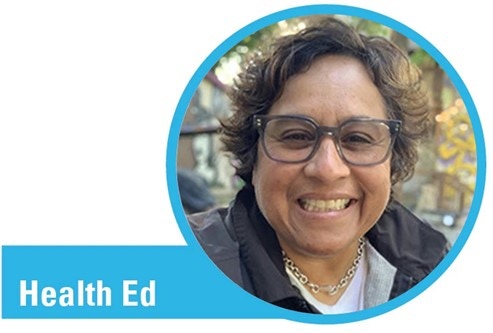

Sandee Ortiz
Sun Prairie, WI
Q: What does being named National Teacher of the Year mean to you personally and professionally?
A: Being named National Teacher of the Year is deeply meaningful—not because of the recognition itself, but because it represents the power of the relationships we have with students and the lasting impact we make as educators. This honor highlights the important work we do beyond academic instruction. It’s about shaping lives, influencing lifelong health and well-being, and creating safe, inclusive spaces where students feel seen, valued, and empowered. Professionally, it reinforces my commitment to this work and reminds me that meaningful change often begins with authentic connections.
Q: What's one piece of advice that has stuck with you throughout your teaching career?
A: If you put students first in all your decisions as an educator, you’ll never lose sight of your purpose—and you’ll make choices rooted in compassion, equity, and long-term impact. Students may not remember every lesson, but they will always remember how you made them feel.
Q: What’s your go-to activity or lesson that always gets students engaged?
A: One of my go-to lessons is introducing mindfulness practices—especially deep breathing and stress management techniques. These activities not only capture students' attention but also resonate with their real-life experiences. Whether it's a guided breathing exercise, a grounding activity, or a discussion on coping with anxiety and stress, students immediately recognize the value because it connects directly to their mental and emotional well-being. What I love most is seeing students take these skills beyond the classroom—using them before tests, at home, during athletic contests, or in tough moments. It’s a powerful reminder that health education is about life tools, not just content.
Q: What’s one underrated teaching resource or strategy that you think more educators should know about?
A: One underrated strategy I believe more educators should embrace is daily student check-ins. These can be brief—just a few minutes at the start of class during a quickwrite—but they create a powerful space for connection, trust, and emotional awareness. Check-ins help students feel seen and supported.
Q: If you had to recommend one piece of equipment every teacher should have, what would it be and why?
A: I always recommend a teacher cart—especially for PE and Health teachers who often navigate multiple teaching spaces throughout the day. Whether you're moving from the gym to a classroom, outdoors, or between buildings, a well-organized cart keeps lesson materials, tech, first aid supplies, and personal items in one place and easily accessible. It saves time, reduces stress, and helps maintain consistency no matter where you're teaching.
Q: What’s your dream piece of equipment that you’d love to have in your program, and how would you use it?
A: A dream piece of equipment for a Health and PE teacher would be a high-quality handheld or portable projector. Much of our teaching happens in non-traditional spaces—gyms, fields, multipurpose rooms—where access to fixed technology can be limited. A compact projector would allow me to bring engaging visuals, videos, presentations, and even mindfulness or movement routines directly to students, regardless of the setting.
Congratulations to the 2025 District Teachers of the Year for adapted physical education, dance education, health education, and physical education!
About the SHAPE America Teacher of the Year Program


Shining a spotlight on outstanding health and physical education teachers across the country
Gopher is excited to partner with SHAPE America to recognize outstanding teachers and support the Teacher of the Year program.
This program recognizes teachers at a district and national level in six categories:
- Physical Education — Elementary
- Physical Education — Middle School
- Physical Education — High School
- Adapted Physical Education
- School Health Education
- Dance Education
Gopher is a member of the SHAPE America Teacher of the Year Partner Network along with SPARK, Wellness Training Specialists (WellTrain), and Goodheart-Wilcox Publisher. Our mission is to support District and National Teacher of the Year winners. We are dedicated to providing opportunities for these teachers to share their successes and journey to becoming Teacher of the Year.
“Each of us has been inspired by an outstanding teacher — and the impact they have had on us is remembered for a lifetime. Gopher is proud to support a program designed to recognize educators and their tireless efforts to help their students succeed. In collaboration with SHAPE America and the other exceptional partners involved in this program, we look forward to sharing the stories and successes of these excellent educators in hopes that it inspires and impacts the entire health and physical education community,” said Gopher Vice President of Marketing Matt Ginskey.